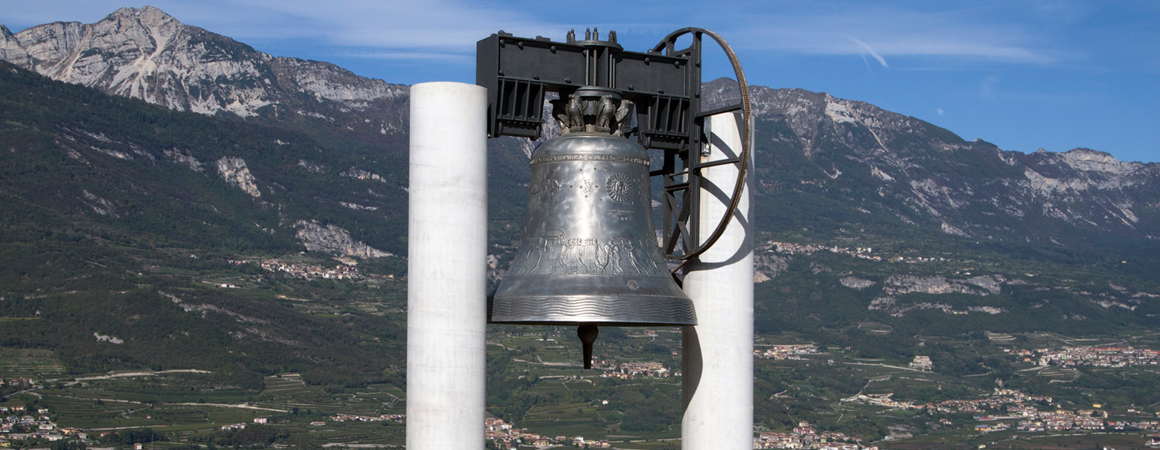FOR WHOM THE BELL TOLLS - P5
In Calliano on 23 May 1925 it rained. A little, but it was raining. People didn’t mind getting wet and stayed in the street to wait as it was a special day. The Bell that was cast on 30 October of the previous year was arriving in the Piedicastello district of Trento, at the foot of the Doss Trento hill, where ten years later the monument to Cesare Battisti would be erected.
The Colbacchini foundry had done a good job, the sponsors had come from all over Italy and had joined the representatives of the «Legione Trentina». Bishop Celestino Endrici, who had to wait until 14 June 1929 to be elevated to the dignity of archbishop by Pope Pius, had blessed the feverish work of the artisans in the large forge illuminated at times by tongues of fire. The actual fusion had lasted less than ten minutes. There were moments of tension. But in the end the cry "Long live Italy" announced that everything had gone well. The largest Bell on the peninsula, one of the most impressive in the world, was born. It weighed 11 tonnes, was 2 meters and 58 centimeters high, the diameter was 2 meters and 55 centimeters and the clapper weighed 600 kilograms.
For a few months a lot of thought went into preparing the baptism and inauguration ceremonies. Don Rossaro devised a series of initiatives to accompany the "glorious rites" of the Bell which involved local artists and artisans. A commemorative medal in the style of Renaissance medallions was minted. Luigi Ratini, master of the art of engraving, prepared a celebratory postcard.
Coats of arms, acronyms, covers, stamps, headings, friezes of various kinds were produced by numerous artists. Meanwhile, the architect Giovanni Tiella was completing the project for the strengthening of the Malipiero bastion.
On March 29, 1925, two months before the rain of Calliano, the commission met which had to choose the official anthem of the Bell among the works that had participated in the competition announced the year before. The text was written by Don Rossaro. Among the 97 participants, Elio Marini (under the pseudonym Ero Mariani), a composer from Merano, prevailed. What was appreciated in his score was "the simplicity, the character, the ease of singing and the temperament of the verses set to music".
Less than two months later, on May 18, there was the testing and assessment by three commissions of experts, all of whom agreed in declaring that they found themselves «in the presence of a true work of art, which will bring great decorum to the city guarding it, that of Rovereto and will simultaneously bestow great honor to the company which oversaw its fusion".
It was time to bring the Bell home, but to get to Rovereto a route was chosen that allowed everyone to understand what had happened. A cart towed by a motorized vehicle left the foundry, passed through the streets of Trento, left the city and visited the villages of the valley with crowds on either side. In Calliano on 23 May 1925 it rained. A little, but it was
raining. Flower petals were thrown from the windows. An elderly lady shouted: «Now I can die happy!» No translation necessary.







